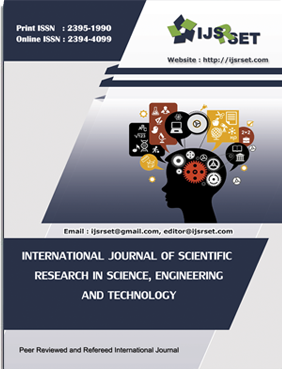Flexible Working Conditions
DOI:
https://doi.org/10.32628/IJSRSET24114102Keywords:
Human Resource Management, Telecommuting, Remote Working, Freelancing, Job SharingAbstract
“Flexible working conditions” is a facility to help the employees to manage their work life and personal life effectively. It provides the feasibility to work according to their choice. It may be time or place. It also improves the satisfaction levels of the employees and the productivity of the employees. It helps employers to reduce the absenteeism and turnover of the employees.
📊 Article Downloads
References
Expert Group Meeting, “Work-Life Policy, Practice and Potential,” Presentation to the Management Committee Office of the Focal Women in the United Nations, Office of the Focal Point for Women, United Nations, 2010.
P. Thomson, “The Business Benefits of Flexible Working,” Strategic HR Review, Vol. 7, No. 2, 2008, pp. 17-22. http://dx.doi.org/10.1108/14754390810853129 DOI: https://doi.org/10.1108/14754390810853129
E. Pruyne, M. Powell and J. Parsons, “Developing a Strategy for Employee Wellbeing: A Framework for Planning and Action,” Ashridge Business School, Nuffield Health, 2012.
D. Hofacker and S. Konig, “Flexibility and Work-Life Conflict in Times of Crisis: A Gender Perspective,” International Journal of Sociology and Social Policy, Vol. 33, No. 9-10, 2013, pp. 613-635. http://dx.doi.org/10.1108/IJSSP-04-2013-0042 DOI: https://doi.org/10.1108/IJSSP-04-2013-0042
D. Torrington, S. Taylor, L. Hall and C. Atkinson, “Human Resource Management,” Financial Times Prentice Hall, New Jersey, 2011.
D. Possenried and J. Plantenga, “Access to Flexible Work Arrangements, Working-Time Fit and Job Satisfaction,” Tjalling C. Koopmans Research Institute, Utrecht, 2011.
H. Chung, “Flexibility for Whom? Working Time Flexibility Practices of European Companies,” Tilburg University, Tilburg, 2009
Zedeck (2011), Industrial and Organizational Psychology (pp.535-572): Flexible work schedules, American Psychological Association. DOI: https://doi.org/10.1037/12169-017
Lisa Fisher (2017), Flexible Work Arrangements: Embracing the Noise to Understand the Silence, Lexington Book Publishing.
Clare Kelliher, Lilian M. de Menezes (2019), Flexible Working in Organizations, Routledge Publications DOI: https://doi.org/10.4324/9781351128346
Downloads
Published
Issue
Section
License
Copyright (c) 2024 International Journal of Scientific Research in Science, Engineering and Technology

This work is licensed under a Creative Commons Attribution 4.0 International License.




